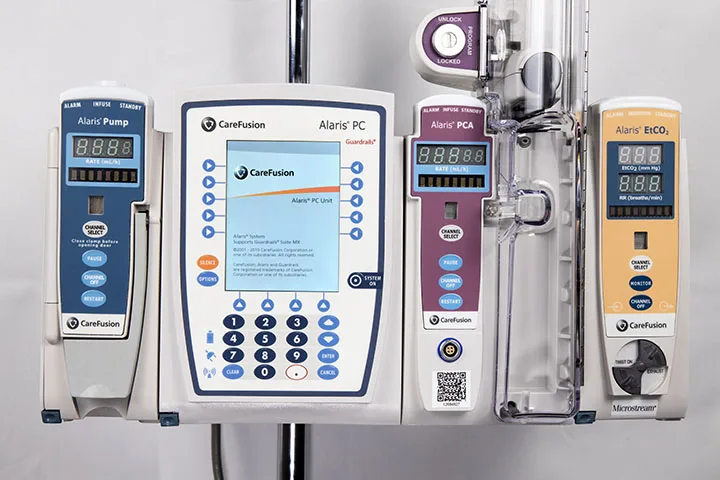How Adopting Alaris IV Pumps Can Improve Patient Care in Your Medical Facility

Patient care and customer satisfaction are the primary goals of any medical facility. New technology in medical engineering has significantly improved medical outcomes with better patient care. Adoption of smart infusion systems such as the Alaris IV pumps has revolutionized dose delivery systems. Alaris smart pumps allow regulated administration of fluids in precise flow rates. Here are seven ways with which Alaris IV pumps can improve patient care:
1. Precise Drug Administration
Alaris pumps provide for precise medication delivery to the patient at predetermined flow rates. The computerized calculation of the dose required creates a standard for drug concentration. Smart pumps are usually used for high-alert medication that requires extra caution when administering the drugs. Using Alaris pumps may help you achieve accurate flow rates at fixed intervals.
2. Simple User interface
All the pumps and modules have an easy-to-navigate interface. The Point-of-Care Unit (PCU) has an ATM-like display that allows you to select your channel module of choice and input infusion parameters. The simple nature of the user interface makes it easy to learn and use efficiently.
3. Customizable Drug Library
A recent study by the National Center for Biotechnology Information shows that 67% of nurses who use smart pumps admit that an up-to-date drug library will help maximize the efficiency of the infusion systems. Alaris smart infusion solutions allow you to configure your drug library to the specific needs of each department in the hospital.
4. Integration to Facility's Network
The Alaris pump software can be easily linked to other hospital networks through a wireless connection. Barcoding through the Barcode Medication Administration helps to send patient dose instructions through the Electronic Medical Records system. The attending health care worker only needs to scan the barcode on the patient's armband, and the pump receives the dosage requirements to run the infusion.
5. Reduced Medical Error
Infusion systems have been in use since the 1960s. Their continued use in the medical sector shows they were able to solve a major problem, primarily human error. The automated dose calculation eliminates human error that contributes to adverse drug effect cases. Alaris IV pumps use the Guardrails Suite MX safety software to reduce medical errors related to incorrect dosage or flow rates. The infusion system monitors the rate of drug administration closely and rings off an alarm to alert nurses of issues.
6. Improved Efficiency During Treatment
Alaris pumps smooth out the dose delivery processes allowing the medical staff to focus more on the patient's needs. The PCU model can accommodate up to four channel modules of any combination, allowing for simultaneous intravenous drug administration with the LVP, Syringe, and PCA modules.
7. Improved Patient Safety
Alaris IV pumps come with a host of safety features to protect the patients. The pump has air detectors, pressure sensors, and alarm systems that alert the medical professionals when there is an issue with the infusion. The safety measures with Guardrails Suite MX prevent under or over infusion of patients that may lead to hazardous outcomes.
Bottom-Line
Infusion systems have transformed the infusion process by ensuring accurate dose administration at the desired flow rates. Integrating Alaris IV pumps can help improve patient care within your facility. If you need Alaris infusion systems for your hospital, contact Med One Group to get a free quote.
